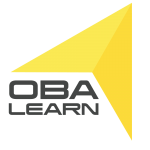Increasing Financial Literacy Through Video-based Learning
By: Lianabel Oliver
Is your leadership team financially literate? Do they know how to move the operating levers that affect the financial performance of your organization? In my experience, many managers, supervisors, and key professional employees lack the basic financial knowledge to run their work areas successfully. The lack of financial literacy can be a crippling weakness for an organization: resources are wasted, opportunities are overlooked, and cash flow dwindles.
Teaching financial concepts to a non-financial audience is more of an art than a science. Many financial training programs, whether live or online, are often too long, too technical, or quite frankly, too boring. While many corporations are now including financial training as a key component of their talent development programs, often these programs suffer from poor instructional design, cover too much material in a short time period, and lack adequate follow-up to ensure the participants can actually apply the concepts learned on the job. In addition, the instructional design of these programs does not account for the wide range of financial knowledge among the participants, with some having absolutely no financial knowledge and others having a considerable amount of expertise. This situation places the facilitator in a difficult position, having to juggle the different levels of knowledge without losing the interest or attention of a group of participants.
Video-based learning can provide viable and cost-effective training solution to bridge this knowledge gap among participants and increase their financial literacy in a uniform manner, at their pace, with measurable results.
So What Exactly Is Video-Based Learning?
Video-based learning programs consist of short, engaging learning modules covering a specific topic, typically delivered online through a learning platform. These modules have clear learning objectives, a solid instructional design, and provide the learner with the opportunity to practice and assess his or her mastery of the concepts. Typically, these modules consist of a video presentation, practices exercises, and a self-assessment. They may include additional resources such as a transcript or handouts that the learner can use to supplement his or her learning process. The mere use of video for educational purposes does not constitute a video-based learning program.
Using Video-Based Learning to Increase Financial Literacy
An effective financial training program, live or online, should explain concepts in clear and simple terms with examples that are relevant to the learner and can be readily applied in the workplace. It should also provide the learner with an opportunity to practice what they have learned in a real-world context. Video-based learning is no different, except that there is no facilitator to interpret blank stares, wake up a bored participant, or further elaborate on a concept that was not clearly understood. Therefore the challenge of video-based learning is to explain financial concepts with such clarity that no facilitator intervention is necessary. The instructional design (how the content is presented and delivered to the learner) is a key factor in achieving the learning objectives and the acquisition of core competencies.
Video-based learning for financial training can be used as a standalone solution or as a complement to an instructor-led session. The use of video-based learning modules as pre-work to a live session ensures that all participants have a base level of knowledge prior to the training and allows the facilitator to cover the seminar topics in less time and more depth. Video-based learning can also be customized to reflect an organization’s particular terminology and processes further increasing the relevance of the content for its users.
The Advantages of Video-Based Learning
Video-based learning can provide significant advantages over live training.
First, it decreases the amount of time and money invested in financial training. Online video-based learning programs are typically more economical and shorter in length than a live program. They tend have a lower attrition rate than massive, open online courses (MOOCs), because they can typically be started and completed in one sitting.
Second, it helps establish a common financial language and a base level of knowledge that is uniform and consistent across the organization. Video-based learning is not facilitator-dependent.
Third, it provides measurable results. Video-based learning modules generally include some form of self-assessment that allows the user to assess the competencies acquired in a non-threatening manner. A user can retake the assessment multiple times until he or she demonstrates mastery of the subject matter at hand. This assessment process can also be used to measure learning retention over time.
Fourth, it provides flexibility into what, when, and how users learn. With video-based learning, a user has total control over his or her learning path and is not subject to a rigid course structure that must be completed in a sequential manner. Training modules can be grouped by major topics and the user determines the sequence in which each module is completed. While a particular module may have prerequisites, these inform the user of the prior knowledge required to understand the material covered in the module.
User groups and community forums can be created to allow users to ask questions and share information that is common to many organizations, moderated by a financial expert.
In summary, video-based learning can provide a flexible and cost-effective alternative aligned to the technology trends of the 21st century and changing habits of a new generation of leaders.

